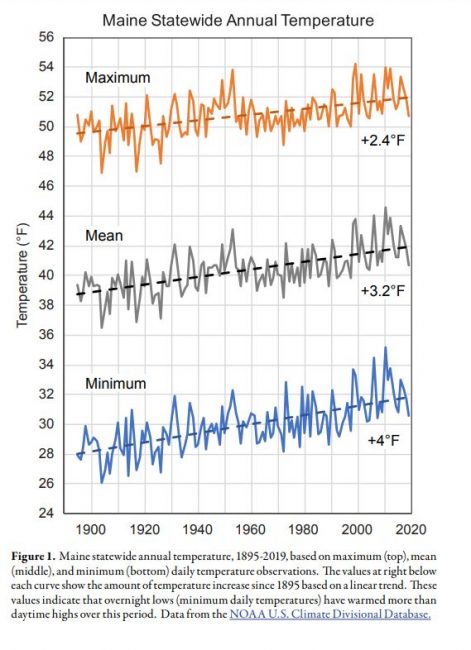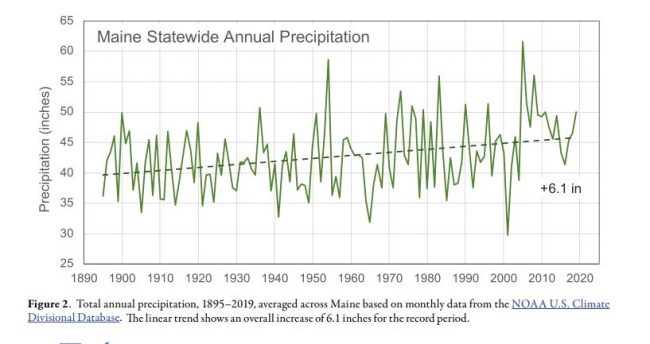Our lakes are already being affected by changes in the climate. While these changes have broad repercussions throughout lake ecosystems, there are two areas of concern that are particularly important to consider when assessing and mitigating these impacts.
The first is temperature change. Our lakes are warming faster than the air around us – in fact – about twice as fast. Since the 1980s, lakes in northern New England has been warming by an average of about 1.4 degrees Fahrenheit per decade (Maine Climate Council Report).

Warmer waters translates into less ice coverage. Records of ice-out and ice-in dates go back sometimes centuries. The trend seen in many of these records is for lakes to be freezing later and breaking up earlier. A study by USGS scientists reported ice-out for 29 New England lakes happening 9 to 16 days earlier since 1850.
Less ice coverage and warmer waters increases the period of summer lake stratification, which can impact how long the bottom waters are deprived of oxygen. This in turn affects where fish can go and increases the likelihood and amount of phosphorus release from sediments. Phosphorus is the limiting nutrient for algae growth. Simply put, more phosphorus means more algae.
Warmer waters are also a better growth medium for the worse type of algae – cyanobacteria (also known as blue green algae). These species can quickly bloom in warm, nutrient rich waters and turn a clear lake into a green, smelly health hazard. This is because many of these species contain cyanotoxins which are dangerous and even deadly to humans, pets, livestock and wildlife.
Many bacteria and pathogens like E.Coli can also survive longer in warmer waters. This problem is compounded by the fact that more people go to the lake to cool down on hot days and people are often a source of these bacteria. Health effects from these bacteria range from gastro-intestinal issues to fever to more serious problems.
 Climate change is also altering precipitation patterns. In the Northeast, heavy precipitation events have become much more common in recent decades. This is problematic for lakes because these intense storms (which often come as rain in the winter) blow out culverts, erode stream banks, and bring in huge amounts of sediment and debris (containing phosphorus) into our waters. With more extreme storms, more nutrients are coming into our lakes and this will further feed algae.
Climate change is also altering precipitation patterns. In the Northeast, heavy precipitation events have become much more common in recent decades. This is problematic for lakes because these intense storms (which often come as rain in the winter) blow out culverts, erode stream banks, and bring in huge amounts of sediment and debris (containing phosphorus) into our waters. With more extreme storms, more nutrients are coming into our lakes and this will further feed algae.
Warmer water and more storms are not good for lake health but we can do something to help protect our waters from these changes. By leaving undisturbed natural areas and vegetation along the shoreline of our lakes, ponds, streams and wetlands, the water coming into these systems will remain cooler and cleaner. The canopy will shade these waters, where they are more susceptible to warming and the trees, shrubs and duff layer will filter out nutrients and stormwater. Landowners with frontage on our lakes, ponds, and streams play a very important role in preserving them and mitigating the effects of climate change by leaving these areas primarily natural.
In addition to working with landowners to help preserve the integrity and function of these areas while maintaining access to the water, LEA staff also review large development projects throughout the watershed to help reduce temperature and stormwater impacts on our lakes from these projects.
Interested in doing more? Contact LEA and we are happy to help.